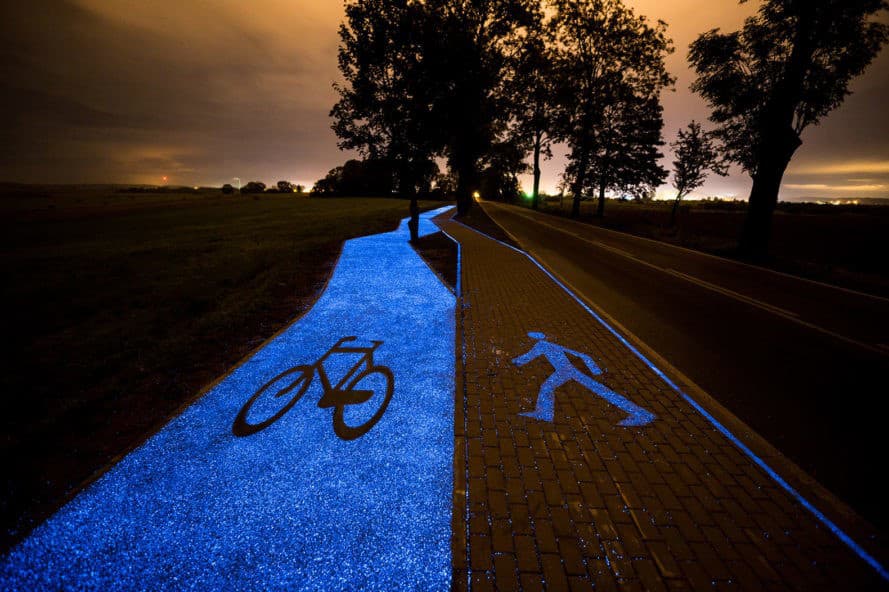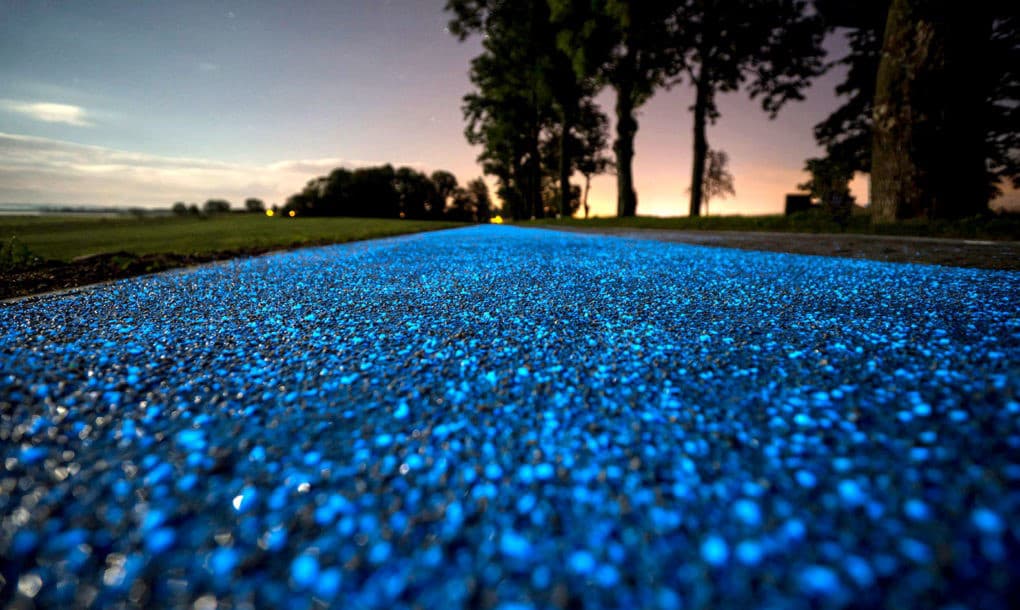Solar powered Glow-In-The-Dark bike lane to illuminate the way in Poland
Polish Engineering firm TPA Instytut Badan Technicznych in Pruszkow has designed the first of its kind luminous bike lane, that opened last week near Lidzbark Warminski in the Mazury region. The path is made of a light-emitting material-Luminophores, which gets charged in the sun and can glow for up to 10 hours in the dark, dipping cyclists in a calming blue glow. The engineers chose blue to “match the Mazurian landscape†where lakes abound; while also quoting that the path can glow in multiple other colors as well.

The current stretch of solar-charged roadway is part of a testing phase to determine the durability and lifespan of the phosphor synthetic substances used. This luminescent bike path also hopes to improve the safety of people biking at night to avoid the precedence of accidents.

The engineers thoroughly researched the sustainability of the energy-sensitive material they utilized, to ensure it was as cost effective as possible, but it still costs more than usual bike lanes. However the material is self sufficient and doesn’t need any other source of energy. Still in nascent stage the researchers hope that the technology passes the tests and lasts through four seasons without affecting the lanes’ traction.
Currently the shining environmental friendly bike lane only covers a distance of about 100 meters, though if proven effective it is likely to be extended.
Source: <a href="https://warszawa.wyborcza.pl/warszawa/1,34862,20752021,swiecaca-sciezka-rowerowa-wyprodukowana-pod-warszawa-pierwsza.html?disableRedirects=true" target="_blank" rel="nofollow noopener noreferrer">warszawa.wyborcza.pl</a>

The current stretch of solar-charged roadway is part of a testing phase to determine the durability and lifespan of the phosphor synthetic substances used. This luminescent bike path also hopes to improve the safety of people biking at night to avoid the precedence of accidents.

The engineers thoroughly researched the sustainability of the energy-sensitive material they utilized, to ensure it was as cost effective as possible, but it still costs more than usual bike lanes. However the material is self sufficient and doesn’t need any other source of energy. Still in nascent stage the researchers hope that the technology passes the tests and lasts through four seasons without affecting the lanes’ traction.
Currently the shining environmental friendly bike lane only covers a distance of about 100 meters, though if proven effective it is likely to be extended.
Source: <a href="https://warszawa.wyborcza.pl/warszawa/1,34862,20752021,swiecaca-sciezka-rowerowa-wyprodukowana-pod-warszawa-pierwsza.html?disableRedirects=true" target="_blank" rel="nofollow noopener noreferrer">warszawa.wyborcza.pl</a>
0

